In the heart of Kruger National Park, a stealthy leopard stumbles upon an easy meal: a group of African wild dogs, fast asleep. Will the unsuspecting dogs detect their doom before it is too late?
One early morning, John Fabiano and his safari group embarked on an unforgettable journey to Lower Sabie in Kruger National Park. Their tour guide from Travel Buggz had been informed of a wild dog sighting in the area, which particularly sparked John’s interest as his photography often centres around human-dog relationships across cultures.
As the group arrived at the sight, they discovered the pack of wild dogs blissfully asleep under the morning sun. While some tourists left the sight after a while, John stayed for quite some time, knowing that wild dog sightings are becoming more and more rare.
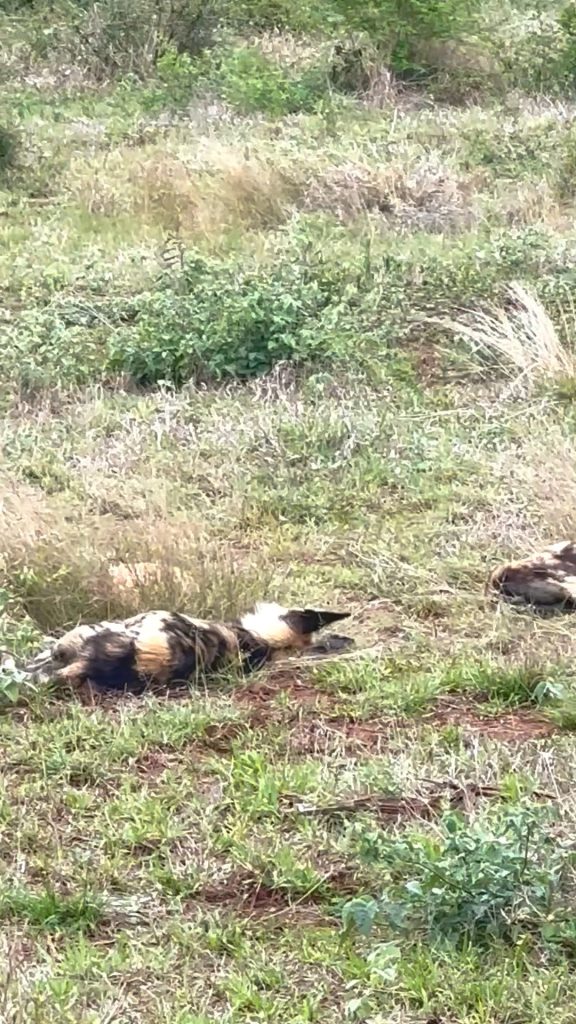
A Hidden Predator Revealed
All of a sudden, John felt a shift in energy at the sight. He looked around and noticed a couple of other tourists staring into the bush with their binoculars and signalling for others to take a look.
As John followed their gaze, his breath caught. A leopard was prowling intently towards the pack of sleeping dogs.
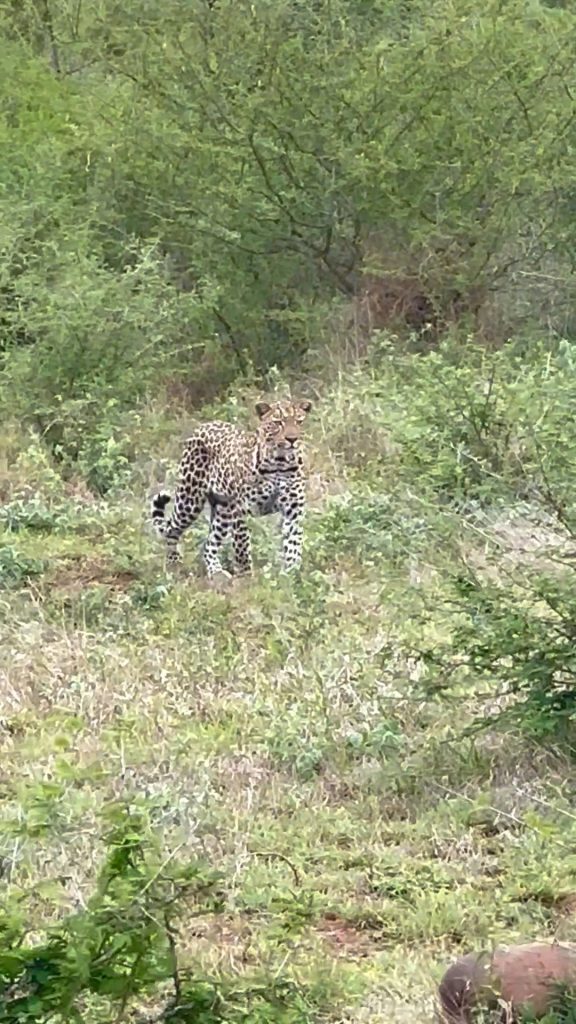
John couldn’t believe what he was about to witness! “Seeing wild dogs is special enough, but witnessing their interaction with a leopard was a once-in-a-lifetime experience.”
The leopard was incredibly clever, using the wind direction to deter its scent as it stealthily paced forward, one paw at a time. Ever so often, it would pause in a calculated way to make sure it wasn’t seen or heard.
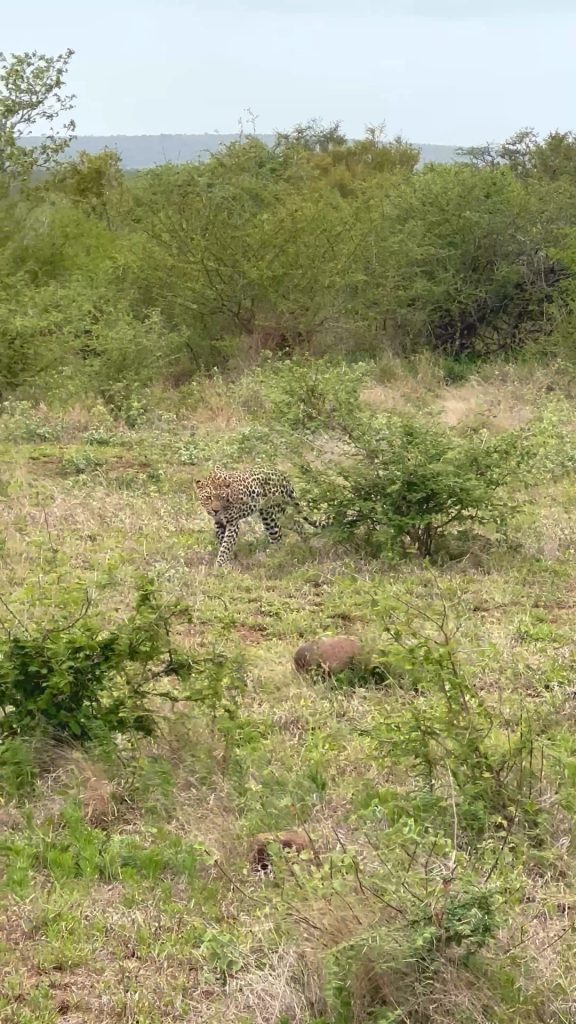
John held his breath as he awaited to see if any of the dogs would notice the presence of the leopard, now only a few meters away from its meal.
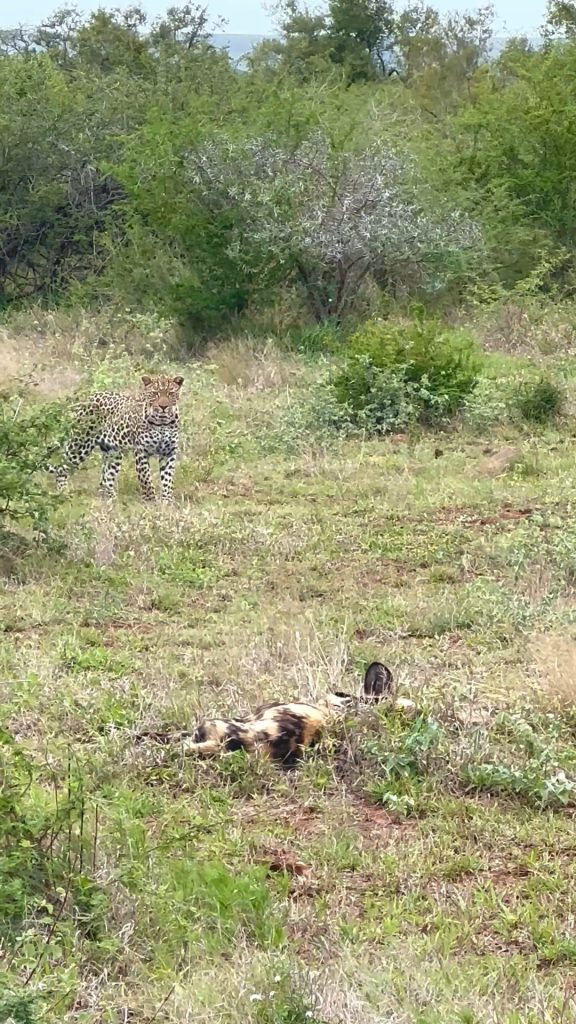
Triumph of Teamwork
Just as the leopard crept within striking distance, one of the dogs lifted its head instinctually and stared right into the eyes of the leopard. The gravity of the situation sunk in, and the dog was up in an instant, barking to alert his pack of the threat.
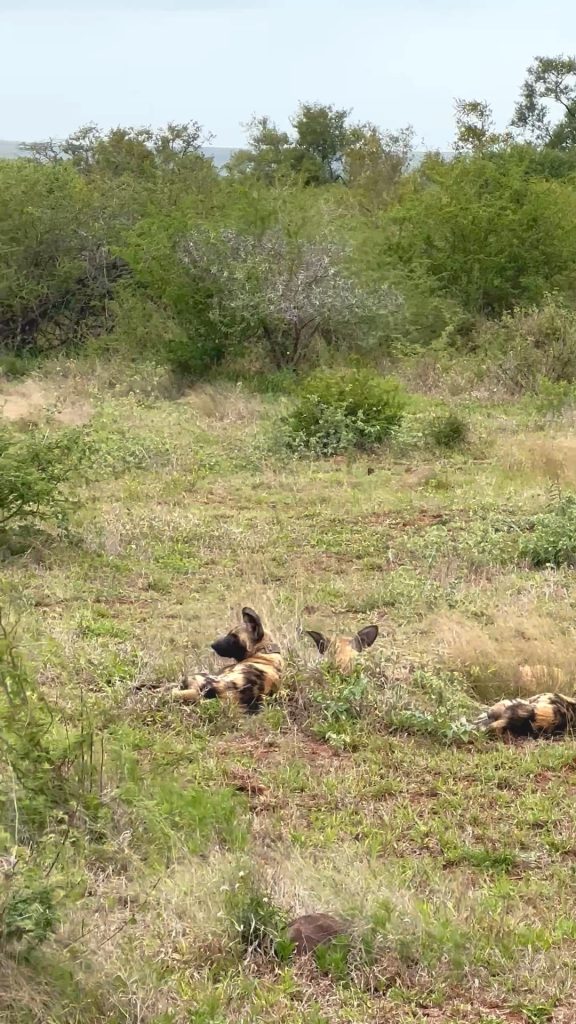
The pack surged to life, springing into action and fearlessly chasing the leopard. Since they outnumbered the leopard, the dogs knew they could dominate the situation as a synchronized defence force.
The dogs charged together, sending the leopard scrambling for safety and turning predator into prey in a matter of seconds. After giving the leopard such a scare they knew it wouldn’t bother them again, the dogs returned to their napping spot, hoping to catch a little more shut-eye.
Perks of the Pack
Living in a pack means survival and African wild dogs embody this perfectly. These social hunters operate as a unit, sharing the responsibilities of hunting, caring for pups, and protecting one another.
With pack sizes between 7 to 15 members, African wild dogs will rely on their strength in numbers when defending against predators. Pack scouts and a tight-knit bond give them the upper hand against stealthy predators like the leopard.
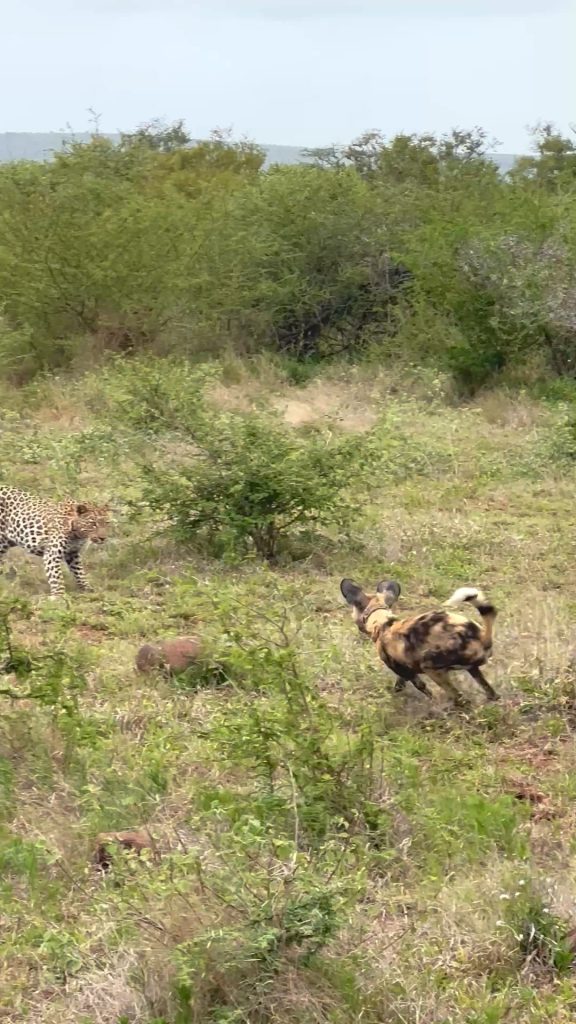
These pack dynamics are why African wild dogs are regarded as symbols of family and loyalty in African culture. John was very fortunate to witness and capture the incredible unity of this pack.
Protecting African Wild Dogs
While a pack of 15 dogs can seem large, several years before the decline in their population, African wild dog packs as big as 100 members were recorded! Unfortunately, due to habitat encroachment and fragmentation, instances of human-wildlife conflict are increasing, and populations of African wild dogs have dropped significantly.
Although African wild dogs are endangered, new solutions to combat population decline are starting to emerge. Tracking of pack movements, construction of livestock enclosures, and engagement and education of local populations are all helping to protect their future.
